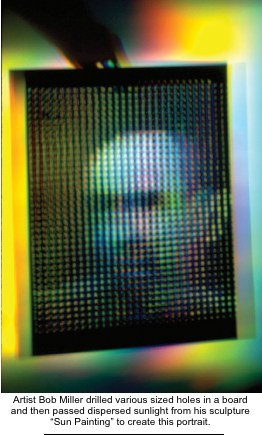| Aesthetics and the Right Answer | |||||
| Frank Oppenheimer, Exploratorium Originally published in The Humanist, March/April 1979 | |||||
| At the Exploratorium, selected artists collaborate with museum staff to produce artworks that are somehow linked to the museum's more didactic exhibits. At a reunion of the artists who had participated in this program, Frank commented, "Art is very much an integral part of what we want people to experience here. If you're going to know about nature, you have to know about how people react to and feel about nature. I think that's what artists communicate." In this article published in The Humanist, March/April 1979, Frank describes some of the similarities between artists and scientists and some of their differences. |  | ||||
| Students in physics courses spend a large fraction of their efforts in solving problems and finding the "right answer." The backs of most textbooks list the right answers for even-numbered problems, and the students feel guilty and stupid if they cannot find the right answers for the odd-numbered ones. In general, physics is considered a "right answer" subject. Its metaphysical implications are widely ignored along with the creative nature of scientific activity Students in art classes, on the other hand, although encouraged to be inventive, are rarely aware that artists also find the "right answers." In fact, in the popular view, no one looks to art to provide any answers at all. Art and science are very different, but they both spring from cultivated perceptual sensitivity. They both rest on a base of acute pattern recognition. At the simplest level, artists and scientists alike make it possible for people to appreciate patterns which they were either unable to distinguish, or which they had learned to ignore in order to cope with the complexity of their daily lives. One can look at | |||||
| hills without noticing that they have a shape until a Cezanne becomes preoccupied with the form of Mont St. Victoire. One can see only a bland flesh color in faces until a Rouault makes one aware of the violent blues and reds and purples that actually appear. Similarly, one can observe the planets rise and set without becoming aware, as Kepler did, that they are moving in ellipses about the sun. One can watch falling bodies without sensing, as Galileo did, that they increase their speed by equal amounts in equal time intervals. Darwin and | |||||